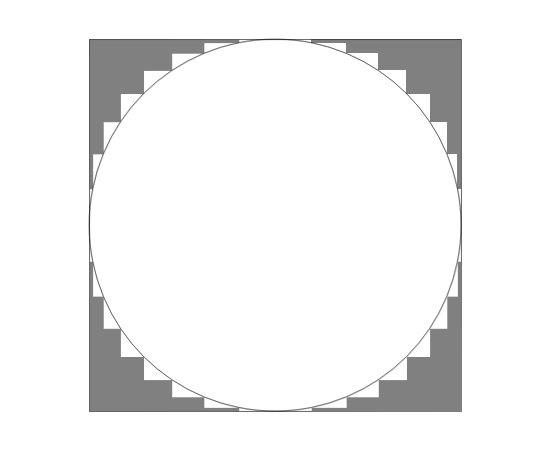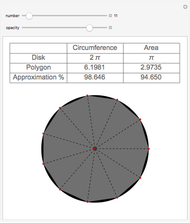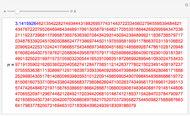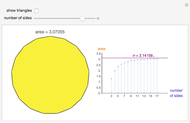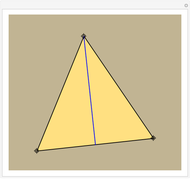Pi = 4?

Requires a Wolfram Notebook System
Interact on desktop, mobile and cloud with the free Wolfram Player or other Wolfram Language products.
This Demonstration shows a perversion of Archimedes' "method of exhaustion" to determine the value of  . The definition of
. The definition of  is the circumference of a circle of diameter 1. Start with such a circle inscribed in a square. The perimeter of the square is clearly 4 times the diameter:
is the circumference of a circle of diameter 1. Start with such a circle inscribed in a square. The perimeter of the square is clearly 4 times the diameter:  . Next, indent the corners of the square, as shown by selecting step
. Next, indent the corners of the square, as shown by selecting step  . The perimeter of the distorted square is clearly unchanged. Thus we can write
. The perimeter of the distorted square is clearly unchanged. Thus we can write  . Continue this process by further indentations of the square by selecting
. Continue this process by further indentations of the square by selecting  . The perimeter of the resulting polygon remains the same:
. The perimeter of the resulting polygon remains the same:  . It appears that
. It appears that  . The perimeter of the polygon clearly approaches the circumference of the circle. After seven or eight steps, we can hardly distinguish the two on the scale of the graphic even with magnification. The apparent conclusion is that
. The perimeter of the polygon clearly approaches the circumference of the circle. After seven or eight steps, we can hardly distinguish the two on the scale of the graphic even with magnification. The apparent conclusion is that  . But didn't we learn in school that
. But didn't we learn in school that  ?
?
Contributed by: S. M. Blinder (January 2016)
Open content licensed under CC BY-NC-SA
Snapshots
Details
Reference
[1] "The Diagonal Paradox," The Freaky World of Math (Nov 17, 2011). freakymath.blogspot.com/2011/11/diagonal-paradox.html.
Permanent Citation

